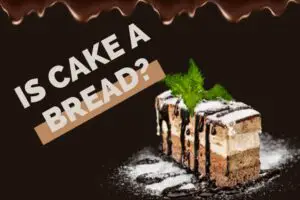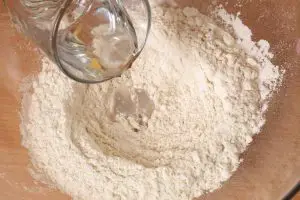Scoring homemade bread is super easy to do, but what some people don’t realize is that it’s an important part of the bread-baking process. In other words, scoring bread does much more than make the bread more attractive: it also directly affects how the bread rises and tastes when it’s done.
Scoring bread is usually done by professionals more than amateurs, but it’s a good idea for everyone who makes their own bread to become familiar with the process because it’s something that you won’t regret in the end.
What Is Scoring and Why Is it Important?
When people score their bread, they make shallow cuts in the top of the bread dough right before putting it in the oven. You can use either a sharp knife or a special tool called a lame (pronounced “lamb”), which you can find any place that sells baking supplies. You have a lot of options when it comes to the designs you place on the dough because you can do anything from make a few slits or make an elaborate design that people are certain to notice.
Certain breads tend to have the same type of scoring design, such as long baguettes, which you typically see with long diagonal lines across the loaf. And if you’re wondering why scoring is so important, the reason is simple. A ball of bread dough has a very taut surface, and when it is exposed to the sudden burst of gas produced by the yeast in a hot oven, the surface of the dough can rupture, usually along any weak spots in the ball of dough.
The ruptures are common if bread isn’t scored, and they can occur anywhere and will be irregularly shaped. Scoring basically gives you a way to control where the ruptures occur, which allows the gas to escape without destroying the bread.
How Deep Should You Score Bread?
Scoring does not include making deep cuts in your bread dough. Instead, the cutting should be shallow and quick. Also, make sure that the knife is nice and sharp, or you can use a lame and make sure that it’s just right. Other tips for making sure that you score the dough properly include:
- Don’t press down on the dough; let the blade do the work for you
- Chill the dough slightly before scoring it because cold dough is easier to score
- To get smooth cuts, wet your blade or spray it with oil
- When making the cuts, don’t just use your wrist but use your whole arm instead
- Make the cuts quickly and with confidence
Remember that scoring the bread allows you to vent the gas in a controlled manner. When you do this, the dough will rise consistently and won’t burst unevenly across the loaf. Scoring helps improve the look of your bread but also helps the dough to rise and look intact once you take it out of the oven.
You can also create an “ear” when scoring your dough. An ear is essentially a raised ridge of crust found along one edge of a cut. When it’s done, it looks just like a handle at one end of the loaf. It allows the bread to have a crunchy edge at that section of the loaf, and you can create the ear by using a curved blade, then holding it at an angle of around 30 degrees so that it gets just under the dough’s skin.
It is the opposite of a straight cut, which releases the bread laterally. Even better, if done correctly, you can actually carry the loaf of bread by holding onto the ear if you like.
Can You Score Bread After Baking?
While you can certainly make cuts in a loaf of bread after it’s baked, it won’t have the same effect. Once your dough gets placed in the oven, there’s always a chance it will burst at certain spots, giving it an uneven look and causing the taste to be a little different than it would otherwise.
If you want to avoid this, you have to score the bread before you put it in the oven. You should also put the dough in the oven immediately after you score it to get the best effects. Don’t allow too much time to elapse between scoring the bread and baking it.
Does All Bread Need to Be Scored?
Most homemade breads are scored before they go into the oven, but the process isn’t a necessity for all types of bread. Breads made out of wholemeal, rye, or spelt have fewer simple sugars and less gluten than other types of bread. This means that much less gas will be created and there will be poorer retention of gas during oven spring.
In simple terms, this means that breads made out of these ingredients don’t need to be scored. Does this mean that they will be ruined if you score them? Not necessarily, but scoring these types of breads isn’t a must.
What Type of Tool Should Be Used to Score Bread?
While most people use a sharp knife or a lame to score their bread, you can use other tools as well. Lames are either straight or curved razor blades with a short handle. If you don’t have a lame and you feel that your kitchen knives are not sharp enough, feel free to use a razor blade instead, which scores bread perfectly.
If you like the idea of producing an “ear” for your loaf of bread, a lame with a curved blade works great, and straight slashes can be formed with a straight blade. The important thing is to make sure that the tool is extra sharp.






